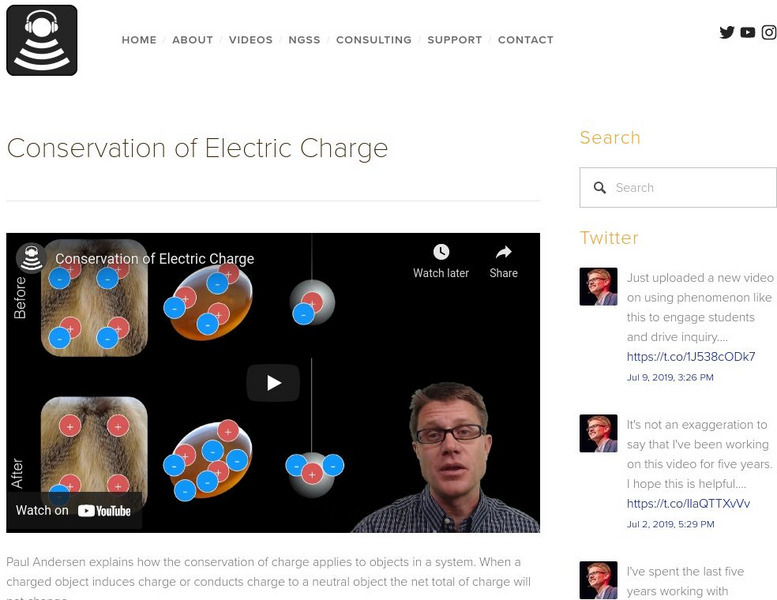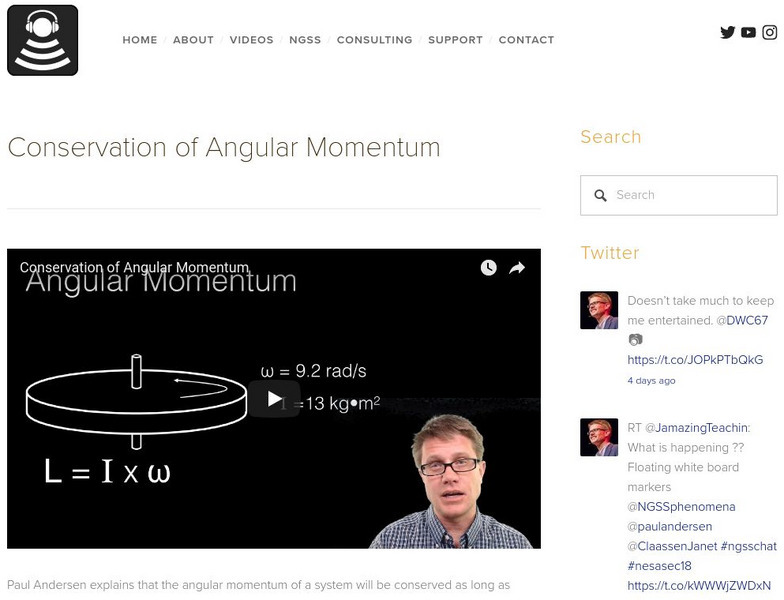Bozeman Science
Bozeman Science: Systems
The following video narrated by Paul Andersen explains how systems are two or more objects that interact with one another. If a system has no relevant internal structure it can be treated as an object. The conservation laws apply to...
Bozeman Science
Bozeman Science: Emission or Absorption Spectra
In the following video Paul Andersen explains how the photons emitted from or absorbed by an atom or nuclei is directly related to electrons moving between energy level. Absorption and emission are a direct result of the conservation of...
Bozeman Science
Bozeman Science: Physics: Kirchhoff's Loop Rule
In this, video Paul Andersen explains how Kirchhoff's Loop Rule can be used to calculate the voltage of different components of a circuit. The sum voltage throughout an entire loop will sum to zero following the law of conservation of...
Bozeman Science
Bozeman Science: Energy Mass Equivalence
Paul Andersen explains how the law of conservation of energy applies to both energy and mass. Einstein showed that mass and energy are equivalent and that the amount of energy contained within matter can be calculated using the famous...
Bozeman Science
Bozeman Science: Physics: Conservation of Electric Charge
In this video, Paul Andersen explains how the conservation of charge applies to objects in a system. When a charged object induces charge or conducts charge to a neutral object, the net total of charge will not change. [6:07]
Bozeman Science
Bozeman Science: Physics: Kirchhoff's Junction Rule
In this video, Paul Andersen explains how Kirchhoff's Junction Rule can be applied to series and parallel circuits. Kirchhoff's Junction Rule is an application of the conservation of charge. The current into a junction will always equal...
Bozeman Science
Bozeman Science: Conservation of Angular Momentum
In the following video Paul Andersen explains that the angular momentum of a system will be conserved as long as there is no net external torque. Both point objects and extended objects are covered along with several examples. [5:38]
Bozeman Science
Bozeman Science: Rotational Inertia
In the following video Paul Andersen explains how the angular momentum of an object if a product of the rotational inertia and the angular velocity. The rotational inertia depends on the mass, radius and shape of the rotating objects. A...
Bozeman Science
Bozeman Science: Conservation of Charge in Reactions
In the following video Paul Andersen explains how the charge is conserved in nuclear reactions. When elementary particles are created or destroyed in a reaction the net change in charge will remain constant. Alpha, beta -, and beta+...








